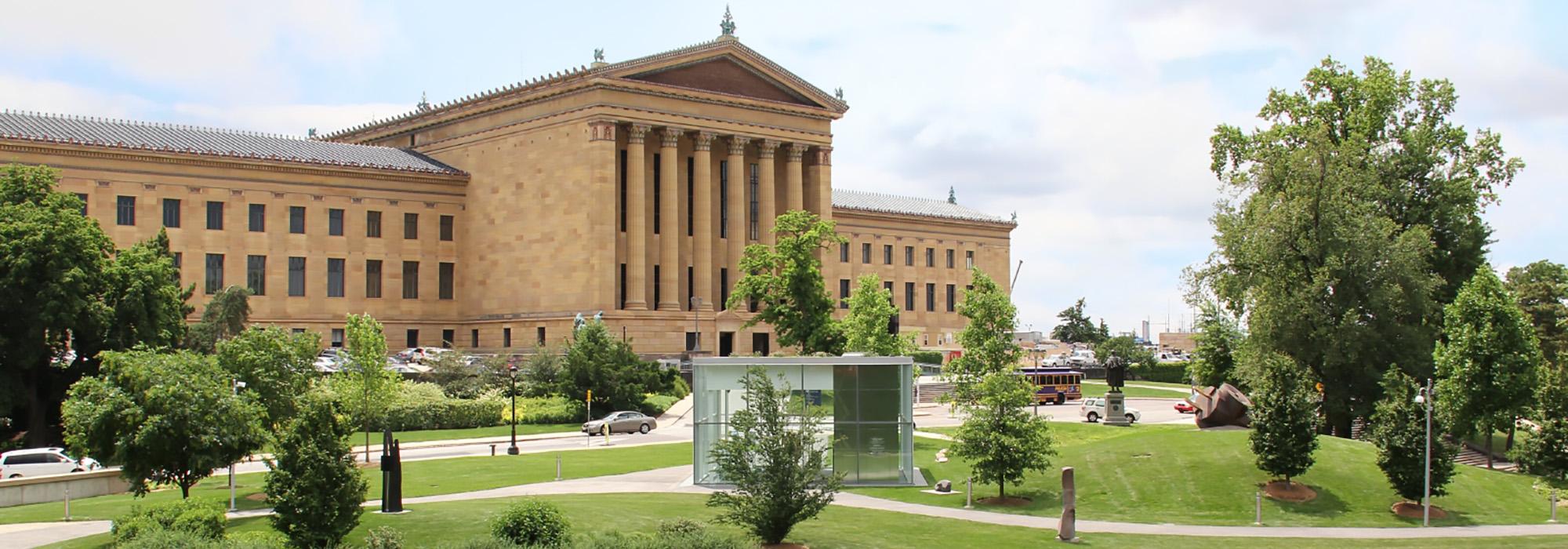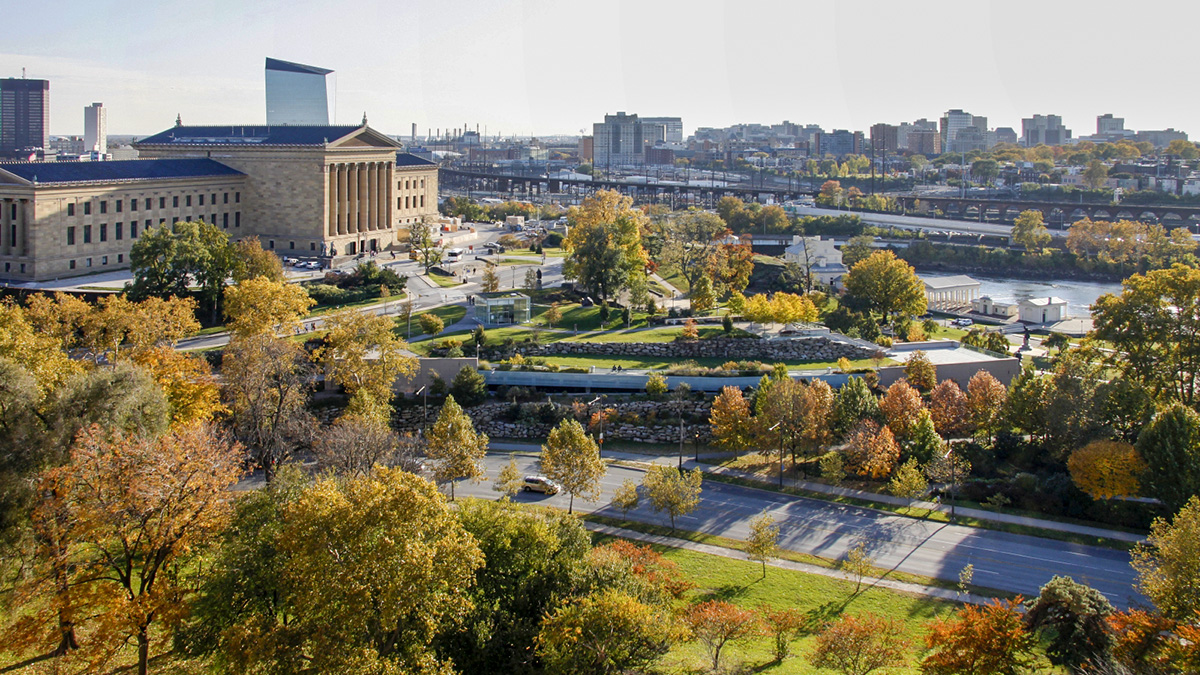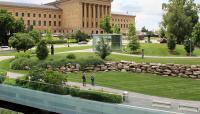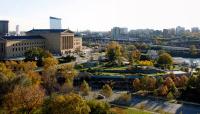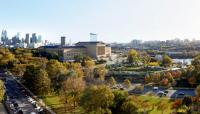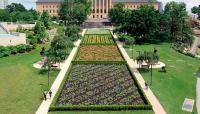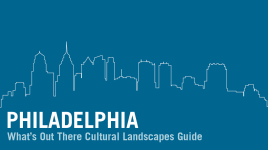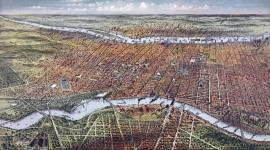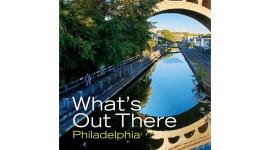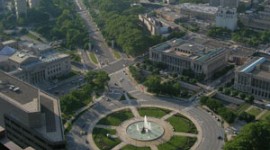Landscape Information
The genesis of the country’s third largest art collection stems from the 1876 Centennial Exhibition. At the end of the World’s Fair, Memorial Hall remained open as the Pennsylvania Museum of Art and Industry. In 1907 a site for a new museum building was selected, atop the recently abandoned reservoir in Fairmount Park. The ten-acre, U-shaped museum complex was situated at the western end of the Benjamin Franklin Parkway (newly under construction) on top of a terraced prominence. The neoclassical building, awarded in 1911 and built between 1919 and 1928 by Horace Trumbauer’s architectural firm with the firm of Zantzinger & Borie, looks out over the city like the Parthenon.
The museum is fronted by Eakins Oval, a grassy ellipse at the terminus of the parkway which holds the bronze-and-granite Washington Monument and fountain. Two round lawn panels flank the fountain and are connected by axial, paved walks. Flights of broad steps lead from the oval to the museum’s upper plaza and fountain. The surrounding grounds are composed of lawn planted with mature deciduous trees. After a period of slow decline, the grounds were restored in the 1980s and 1990s with funding through the Pennsylvania Horticultural Society. In 2009 the one-acre Anne d'Harnoncourt Sculpture Garden opened, situated atop a large underground parking garage on the north side of the museum building. The museum complex also includes the Rodin Museum, designed in 1929, and the Perelman Building opened in 2007.



